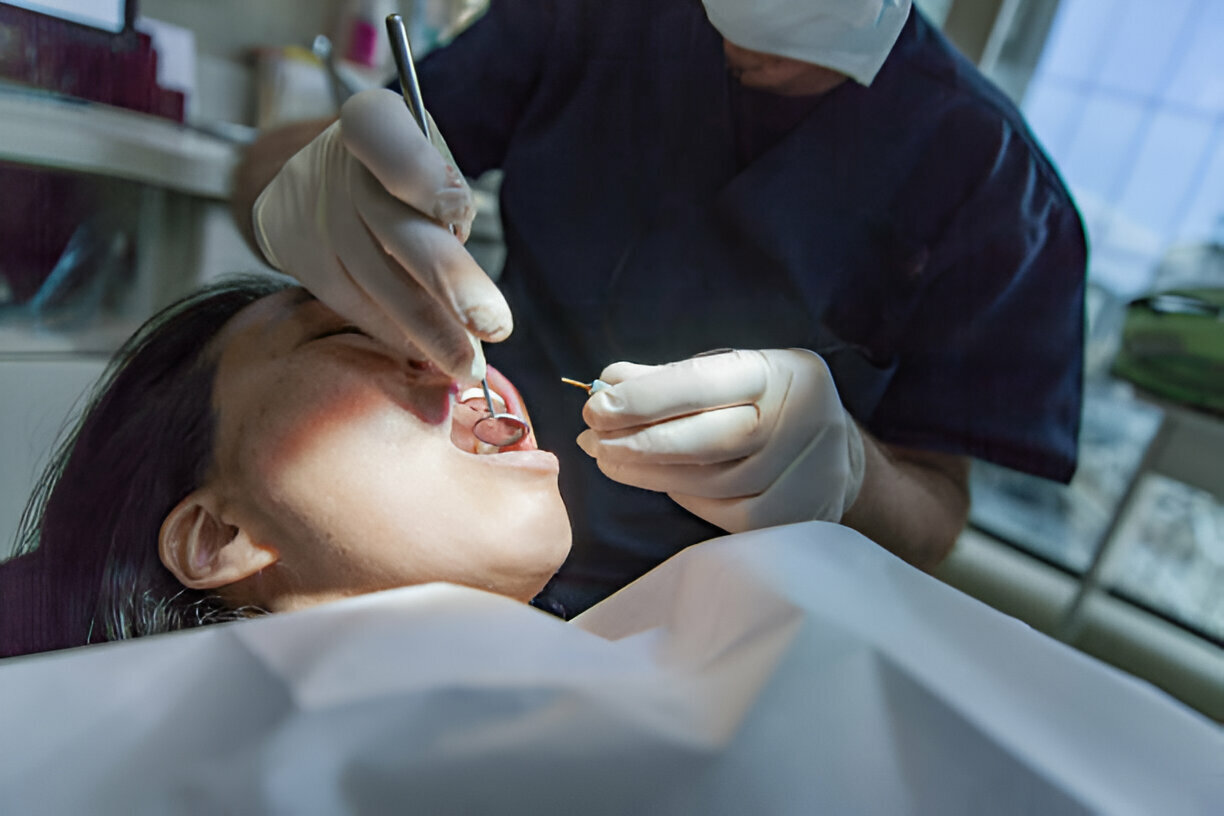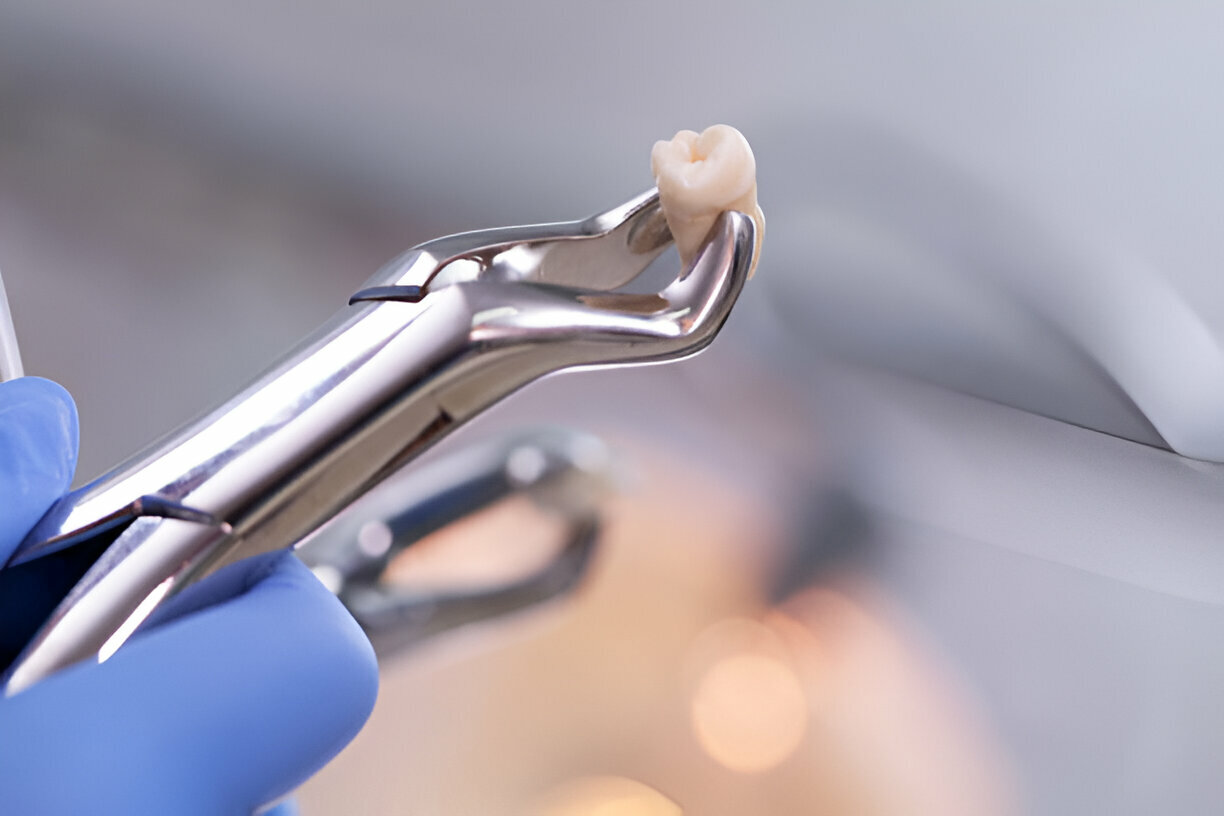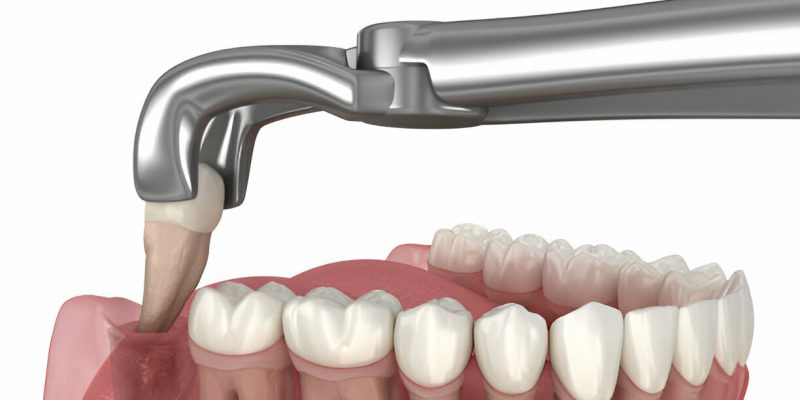Summary
Feeling anxious about your tooth extraction?
Relax; it’s okay to wonder about the process and how to ensure a smooth recovery.
Whether wisdom teeth extraction in San Antonio or simple extraction, recovering from an oral extraction need not be an uncomfortable experience. In this post, we take a closer look at the different aspects of extraction via topics like:
- What Is Tooth Extraction About?
- 5 Tips to Ensure A Smooth Post-Extraction Recovery
- Other Restrictions Post Tooth Extraction
So continue reading as we learn more about recovery and pain management in the following sections.
What Is Tooth Extraction About?
Tooth extraction is a regular dental operation. Most extractions are done effortlessly, and patients feel little to no discomfort during the surgery. However, like with any surgical operation, problems are not altogether avoidable.

Tooth extractions are often performed with a local anesthetic, which numbs the region surrounding the tooth. The dentist then creates an incision in the gums and extracts the tooth. In rare circumstances, the dentist may need to shatter the tooth into tiny pieces before extracting it.
5 Tips to Ensure A Smooth Post-Extraction Recovery!
1 Follow Post-Operative Instructions:
Following your dentist’s post-operative instructions is critical for a successful tooth extraction recovery. These recommendations are tailored to your unique requirements and assist in reducing the risk of consequences like infection or excessive bleeding. Therefore, ensure you follow any food restrictions, activity limitations, and dental hygiene suggestions made by your dentist.
Common post-operative recommendations may include:
- Refraining from forceful washing or spitting for the first 24 hours
- Avoiding smoking or using tobacco products
- Taking medicines as recommended, including pain relievers and antibiotics
- Applying cold packs to the afflicted region to alleviate swelling and pain
- Eating soft meals while avoiding crunchy, hard, or sticky items that might aggravate the extraction site
- Rinsing carefully with salt water or a mouthwash to clean the extraction site
By carefully following these instructions, you may encourage routine healing and reduce the chance of problems during your tooth extraction recovery.
2 Manage Pain and Discomfort:
It’s common to feel pain and discomfort once you leave your dental in San Antonio, TX, after a tooth extraction, especially in the first few days. However, you may try to control discomfort and increase your comfort during healing. To reduce discomfort, your dentist may prescribe pain medication, which you should take as instructed.
In addition to medicine, you can take over-the-counter pain medications like ibuprofen or acetaminophen to alleviate discomfort and inflammation. Ice packs can also assist to numb the region and minimize swelling. Follow your dentist’s pain-management suggestions and avoid aspirin, which might increase the chance of bleeding.

3 Monitor for Signs of Infection:
While uncommon, a tooth infection can be followed by infection, demanding immediate treatment by your dentist. It is critical to check for indications of infection and get medical assistance if you have any of the following symptoms:
- Persistent or intense pain that does not respond to medicines
- Swelling or redness in the gums or jaw
- Fever or chills
- Foul-smelling discharge or pus from the extraction site
- Swallowing and breathing are difficult
If you have any of these symptoms, call your dentist immediately for further assessment and treatment. Early management can help reduce the spread of illness and encourage a faster recovery.
4 Maintain Good Oral Hygiene:
Proper oral hygiene is essential for preventing infection and promoting healing following a tooth extraction. While you should avoid vigorous brushing or flossing near the extraction site during the first few days, keeping the rest of your mouth clean to prevent bacteria from causing infection is essential.
To help keep the extraction site clean and debris-free, gently rinse your mouth with salt water or a mouthwash suggested by your dentist after the first 24 hours. To remove plaque and food particles, floss often and clean your teeth gently, avoiding the extraction site.
5 Eat a Soft Diet:
In the days after a tooth extraction, a soft diet is advisable to facilitate healing and prevent aggravating the extraction site. Choose simple meals which can be easily chewed and swallowed, such as scrambled eggs, yogurt, mashed potatoes, soups, and smoothies.
Avoid hard, sticky, or gritty foods that might dislodge the blood clot developing at the extraction site or irritate the surrounding tissues. As your healing progresses, you can gradually go back to solid meals, beginning with softer alternatives and moving on to more demanding textures.
Other Restrictions Post Tooth Extraction
Avoid Excessive Physical Activity
Excessive physical exertion should be avoided while you are recuperating after tooth extraction. This implies no strenuous activity or sports for at least one week. You do not want to disturb the blood clot growing in the empty socket where your tooth was.
If you have sutures, they will require time to heal. Even mild exercises may result in tears and bleeding. Once your stitches are removed and your socket has healed, you can gradually resume your regular level of activities.
Avoid Straws and Smoking
Smoking raises your chances of risks and delays in recovery. It is advised to avoid using straws and smoking throughout your recovery period.
Smoking is not just harmful to your overall health but also your dental health. Smokers have twice the risk of developing gum disease and other oral diseases. Gum disease can make it difficult for your gums to heal following an injury, such as tooth extraction.
So, if you smoke, it’s time to quit. Not only will it benefit your general health, but it will help hasten your recovery following a tooth extraction.

Visit Your Dentist for a Follow Up Visit
Following tooth extraction, your dentist will schedule a follow-up visit. It is essential to attend this appointment so that the dentist can monitor your healing process and ensure there are no concerns. Here are some suggestions for getting the most out of your follow-up visit:
- Brush and floss frequently in the days preceding your checkup. This helps to eliminate any food particles or plaque that may interfere with the dentist’s inspection.
- If you are still suffering pain or discomfort, notify the dentist. They may be able to prescribe medicine or offer other options for assistance.
Are there any questions you would want to ask the dentist? This is an excellent opportunity to learn more about post-extraction tooth care.
Takeaway
- Most tooth extractions are done effortlessly, and patients feel little to no discomfort during the surgery.
- Smoking is not just harmful to your overall health but also your dental health.
- Excessive physical exertion should be avoided while you are recuperating after tooth extraction.
- Don’t let the thought of tooth extraction intimidate you, visit our experts at Heritage Dental today!

